David J. Bookbinder's Blog, page 7
July 12, 2017
The Gratitude Cure for (Almost) Everything
Gratitude is the fairest blossom which springs from the soul.
– Henry Ward Beecher
During my recuperation from a brush with death, a high school friend sent me a letter. In it, he hypothesized that as a survivor of near-death, every moment for me must be exquisitely sweet, a precious gift, in ways he could not imagine.
At first, he was mostly right. Despite the pain, my initial response was celebratory. But the celebration was relatively short-lived and bittersweet. As weeks became months and months became years, the glow gradually diminished. Yielding to the numerous problems that almost dying had also brought on, gratitude faded and a more troubled self re-emerged. Returning to that place of celebration has been a process.
Grateful people are generally more satisfied with their lives and relationships, cope better with difficulties, and are more generous, empathetic, and self-accepting. But despite these many benefits, many of us have a hard time feeling gratitude.
Often, early deprivation gets in the way. When there isn’t enough of what we need – money, warmth, praise, joy, many other things – we intuitively respond by feeling deprived. We may carry this deprivation forward into adulthood and see life mainly as a struggle to get what we need. We often became good at making do, learning to be independent, acting assertively. But we don’t learn to fully experience what is already there for us, if only we were open to taking it in. And so we grow cynical and jaded, mistaking an internal barrier for an external lack.
Or, deprivation may leave us hungry for more. If we’re grateful for what we have, we may ask ourselves, what will motivate us to get more? But always wanting more does not make us happy. It just makes us always wanting.
An alternative approach is to start from a place of gratitude. Then we say, “I am happy with what I have now. If I get more, I will be happy then, too.”
The difference between these two approaches came to me most clearly at a Buddhist retreat held at a local college. I requested a half-hour meeting with one of the monks there. We sat together on a hillside overlooking the dining hall and ate our lunches while I talked with him about feelings of hurt, betrayal, and despair that followed the difficult ending of a long relationship.
“I understand your feelings,” he said, “but this way of looking at love is too limited. You think it comes only from these people, and now it is gone. But love comes from many places.” He held out his sandwich. “The baker who made this bread shows us love. Yes, it is his business, but the bread is very good and there is love in it. And there are the trees and the grass. They give us oxygen – without them we could not live.” He looked up at the sky. “And the sun gives us warmth.”
As he continued to point out human and non-human sources of love, I felt a shift inside. Until that moment, the idea that “the universe loves us” had seemed so abstract it was meaningless. But now, listening to this young monk as he took in the love of the cosmos, I vicariously experienced his gratitude, and I carry these feelings with me to this day.
A simple but effective tool for counteracting our in-built tendency to focus on shortages is the gratitude list. It is a way to reinforce the feeling that regardless of what we lack, we also have many things for which to be grateful. We may not have all the wealth we want, the health we want, the relationships we want, the things we want, but when we list what we do have, we have a lot.
Most of my own gratitude lists I keep in my head, but from time to time I write them down. I started one for this essay. I soon realized I could spend hours naming things for which I feel grateful, and that the list of what I’m unhappy about, even in the worst of times, is always much shorter. Here, in the order in which they occurred to me, are the first 50:
Being alive. Being human. Coming of age in 1969. All five of my senses. Intuition. My friends and family. Women I’ve loved. Beauty. Sadness. Joy. Wonder. Curiosity. Imagination. All the arts. All the sciences. Other animals. Plants. Rocks. Clouds. The blue sky. The ocean. Mountains. Children. Gadgets. Cars and motorcycles. Things to figure out. People who figure things out. Intelligence. Hope. Coffee. Chocolate-covered almonds. Memories. Greek yogurt. Strawberries. Apples. Books. Meditation. Movies. Music. Air. Water. Land. Humor. Babies. Flowers. Silence. Wind. Lightning. Compassion. Popsicles.
What’s on your gratitude list today?
P.S. If you find what you read here helpful, please forward it to others who might, too. Or click the social share and email buttons on this page.
From Paths to Wholeness: Fifty-Two Flower Mandalas
Print: Amazon – BookBaby – B&N – Books-a-Million
eBook: Kindle – Nook – iTunes – Kobo
Also available:
52 (more) Flower Mandalas: An Adult Coloring Book for Inspiration and Stress Relief
52 Flower Mandalas: An Adult Coloring Book for Inspiration and Stress Relief
Paths to Wholeness: Selections (free eBook)
Follow me on:
Bloglovin’
StumbleUpon
Medium
Copyright 2017, David J. Bookbinder
http://www.transformationspress.org
http://www.davidbookbinder.com
http://www.flowermandalas.org
P.S. If you find what you read here helpful, please forward it to others who might, too. Or click the social share and email buttons on this page.
July 5, 2017
When Failure is an Option

Never confuse a single defeat with a final defeat.
– F. Scott Fitzgerald
In our success-driven culture, there seems to be no end of helpful adages for dealing with failure. But “failure is not an option” is small comfort to those who believe they have already failed, “if at first you don’t succeed, try, try again” seldom encourages the already discouraged, and “we learn more from failure than from success” is scant consolation when we don’t see a silver lining in the cloud of our defeats.
The problem with these guidelines is that the underlying concept of “failure” is flawed. Most of us hope we will achieve what we strive for and believe that when we don’t, we have failed. Striving for what we want is a natural part of our makeup, but attachment to the outcome of those strivings can imprison us.
For a young client whose motto was “Number 2 is the first loser,” success meant being the best at anything he tried. The pressure of being Number 1 was constant and he lived in a nightmare of fear that someone, somewhere, was better than he was. He was good at what he did, but he also became the most “successful” drug abuser I’ve encountered. Losing his fear of failing to meet an impossible standard was his first step toward recovery.
In my own life, as a boy, taking failure off the table made me valedictorian of my high school at the expense of a lopsided life. As an adult, never giving up kept me in doomed relationships and unsatisfying occupations. When things fell apart, the “lessons” of failure did nothing to avert despair. Only by abandoning these guidelines have I been able to find freedom.
I wonder even about inspirational tales of success. Thomas Edison, when asked about his relentless attempts to find a viable filament for an incandescent light bulb, remarked, “I haven’t failed. I’ve just found 10,000 ways that won’t work.” We have all benefited from Edison’s persistence. But what might he have discovered had he given up his quest for the incandescent light bulb and looked for another way to turn electricity into illumination?
When we lose attachment to outcome, everything that happens just is. If things don’t work out as we hope they will, there is no failure; our lives have simply taken a different turn. Finding ourselves on an unexpected path, we can stop and look around and ask what we can do now. Perhaps we reevaluate, learn from our mistakes, and try, try again. Or maybe we find that one door closes, another opens, and we go through that second door instead.
Understanding the opportunities implicit in failing came to me most clearly on the day of my near-death experience. That afternoon, I was cranky and irritable, annoyed with the nurses and my girlfriend because of the inconvenience of being in the hospital, away from everything that seemed vitally important to achieving success as a college professor and novelist. A couple of hours later, however, I was fighting not to succeed but to stay alive. From that event forward, I was on a different path. Would my life have been more “successful” if I had written that novel and completed that PhD? Or has the range of experiences since then been enriching in ways that could not have occurred if I’d succeeded in achieving my original goals?
Sometimes I use Flatland, a short novel written by Edwin Abbot at the end of the 19th century, to help clients envision alternate selves who, rather than succumbing to defeat or rising to try again, can choose a different path. On Flatland, the inhabitants are all two-dimensional shapes. Women are triangles and men are polygons with four or more sides. These unusual beings move about on the surface of their flattened world seeing only length and width. Because they cannot view each other from above or below, the Flatlanders perceive themselves not as the shapes familiar to us from geometry, but as lines of varying lengths.
Flatland’s protagonist is a Square. When a Sphere drops into his plane of existence and briefly plucks him out of Flatland, he becomes aware that although he experiences his world as two-dimensional, it, too, has a third dimension, the dimension of height. His mind opens.
These days, I feel a lot like the liberated Square, whose viewpoint was once limited to two dimensions but who can now sense an additional one: the dimension of possibility. When we add that dimension, we can all turn “failure” into an opportunity to explore a reality that could not have come into being, had there been “success.” The trick is to be willing to say, “I thought I was going there, but now I’m here,” and then to ask, “What is happening here?”
P.S. If you find what you read here helpful, please forward it to others who might, too. Or click one of the buttons on the right side of this page.
From Paths to Wholeness: Fifty-Two Flower Mandalas
Print: Amazon – BookBaby – B&N – Books-a-Million
eBook: Kindle – Nook – iTunes – Kobo
Also available:
52 (more) Flower Mandalas: An Adult Coloring Book for Inspiration and Stress Relief
52 Flower Mandalas: An Adult Coloring Book for Inspiration and Stress Relief
Paths to Wholeness: Selections (free eBook)
Follow me on:
Bloglovin’
StumbleUpon
Medium
Copyright 2017, David J. Bookbinder
http://www.transformationspress.org
http://www.davidbookbinder.com
http://www.flowermandalas.org
P.S. If you find what you read here helpful, please forward it to others who might, too. Or click one of the buttons on the right side of this page.
June 21, 2017
How to (Really) Listen
The first duty of love is to listen.
– Paul Tillich
Failures to listen are endemic to our species.
The most common complaint from parents who bring their children to me for counseling is that “they don’t listen,” by which the parent usually means that the child does not obey. When I talk with children, they likewise complain that their parents don’t listen, but they mean it literally. Failure to listen to children has subtle but enduring consequences. Kids who grow up unheard can pass on what they experienced to their own children.
I discovered the value of listening carefully to children, in their words and their behaviors, many years ago. One evening, while visiting one of my brothers, I joined the family for a dinner of fried chicken. My niece, then three years old, repeatedly asked for “an angel.” My brother and his wife told her to stop complaining and eat her dinner. As her requests for “an angel” became more strident, so did her parents’ reprimands. I found myself wondering what she might mean by “an angel” and offered her a chicken wing. She smiled, took the wing, and happily finished her meal.
The complaints I hear from couples are similar to those I hear from parents: “He doesn’t listen.” “She doesn’t listen.” “He/she did it for no reason.” But there is always a reason; usually, we need only to ask, and to listen, to determine what it is.
Many of us are so concerned with what we want to say, or so convinced that our beliefs are true, that instead of really listening, we talk over one another, interrupt, discard the other person’s point of view, leaving unheard and often unspoken the deeper parts of who we are.
In the Buddhist sangha I attend, each week someone reads from the writings of a teacher. The teachings are called the dharma, and we explore them in a dharma discussion. One by one, as we are so moved, we speak either to the topic of the reading or to something important that has occurred in our lives. A sangha rule is that after someone speaks, we wait three slow breaths before anyone else talks, so we have time to fully take in what each of us has shared. We don’t need to mentally rehearse anything, we don’t have to look for the right time to chime in, and we aren’t afraid that we won’t have a chance to say what we need to say. There is, somehow, always enough time.
With my niece, I was outside the family system and could see the dynamic from a distance. As a therapist, I am also outside the family system and can sometimes discern, more readily than its members, where communication has broken down. And, as a sangha member, I am reminded of how to listen at the beginning of each dharma discussion. But we don’t have to be outside the family system, or therapists, or Buddhists, to listen. We just have to practice.
The following exercises are some I have found helpful in my training and my life. You might, too. They are all practiced by two people. First, one speaks while the other listens, and then they reverse roles. You may wish to try them with a friend or family member.
Listen silently. Sit quietly for five minutes and listen to someone talk about something important. Signal your interest using only your facial expressions and your eyes.
Listen with tonal responses. Add, to the above, non-verbal utterances such as “Ah!” “Mmm,” “Uh-huh,” and so on.
Listen with body language. Add, to the above, by responding to the body language of the speaker with your own body language.
Listen with comments on tonal responses and body language. Add, to the above, by commenting on the speaker’s tone and body language, but not on his or her words. “I noticed your voice dropped.” “I see that you’re shaking your head from side to side.”
Listen with mirroring. Finally, add to the other exercises by directly mirroring what the speaker says. Listen to what feels like a chunk of monologue and then signal the speaker to pause. Next, say something like, “So, it sounds to me as if you are saying…. Is that right?” If you have captured the gist of what the speaker said, the speaker continues with the next chunk. If not, the speaker clarifies, then you mirror back the clarification to make sure that you now understand.
By nature, we may not be good listeners. But, by nature we are not good at many things, and yet we eventually learn to do them well. Listening skills are not complex and they are easily learned. Even young children I have worked with can become quite skillful at listening, often with surprisingly little instruction. So can we all.
P.S. If you find what you read here helpful, please forward it to others who might, too. Or click one of the buttons on the left side of this page.
From Paths to Wholeness: Fifty-Two Flower Mandalas
Print: Amazon – BookBaby – B&N – Books-a-Million
eBook: Kindle – Nook – iTunes – Kobo
NOTE: Paths to Wholeness is now available at the following Boston-area bookstores and libraries:
Cabot Street Books & Cards, 272 Cabot Street, Beverly, MA 01915
The Bookshop, 40 West Street, Beverly Farms, MA 01915
Boston Public Library (main branch)
Brookline Public Library (main branch)
NOBLE Public Libraries (Beverly Farms and Salem)
MVLC Public Libraries (Hamilton-Wenham)
Please let me know if you find it in other locations!
Also available:
52 (more) Flower Mandalas: An Adult Coloring Book for Inspiration and Stress Relief
52 Flower Mandalas: An Adult Coloring Book for Inspiration and Stress Relief
Paths to Wholeness: Selections (free eBook)
Follow me on:
Bloglovin’
StumbleUpon
Medium
Copyright 2017, David J. Bookbinder
http://www.transformationspress.org
http://www.davidbookbinder.com
http://www.flowermandalas.org
P.S. If you find what you read here helpful, please forward it to others who might, too. Or click one of the buttons on the left side of this page.
June 14, 2017
15 Self-Help Books that Really Helped
If you type “self-help books” into Amazon’s “Books” category, you’ll get more than 675,000 hits, and their “Kindle” category lists nearly 300,000. That’s a lot of self-help!
But how many of these books have actually helped? And how many books outside the “self-help” category have been even more helpful?
Just for kicks, I drew up a list of the 15 books that, over the course of my lifetime, I’ve found most helpful, either personally or professionally. Here they are in the order in which I read them.
What books have been helpful to you, “self-help” or otherwise?
The Marriage of Heaven and Hell, by William Blake

I first encountered this part visionary / part comic / part poetry / part etching long poem in 1969, in an English class, while an Engineering student at Cornell University. I had grown up a kid scientist, and my hope was that I’d become a NASA engineer. I was also very much in my head and not so much in my body, in the world of logic and not so much the world of emotion. Blake’s poem convinced me I had to change all that or else live out my days a reduced version of myself. This powerful piece reached out to me over 200 years and 6000 miles and changed not only my focus (from Engineering to English major) but also set in motion a process of actualizing the more suppressed parts of myself, a lifelong activity that began then and there. Thank you, Mr. Blake!
Tales of the Dervishes, by Idries Shah
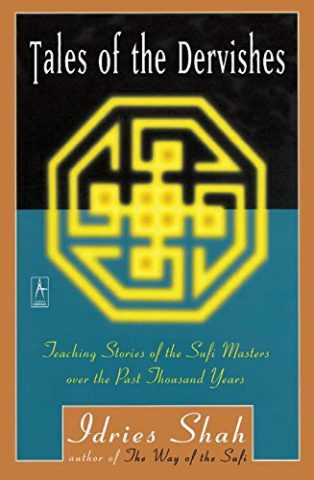
I read this book in 1970 in what officially was an English Composition class but was really a class in what for me were radically different ways of thinking and seeing. Tales of the Dervishes, a collection of Sufi teaching stories, was my first introduction to Eastern thought. The tales are in the form of parable, and they’re intended to be understood differently according to the ability of the listener/reader. Some I still vividly recall and have used in conversations with friends and therapy clients. I went on to study with a Sufi guide for a while, and learned from him a Sufi meditation practice aimed at increasing intuition and creativity that seemed to open up a kind of 6th sense. Remarkable stuff. I’ve since migrated to Buddhist practices, but I continue to find the Sufi teachings and practices intriguing, and my experience of them began here.
Zen and the Art of Motorcycle Maintenance, by Robert Pirsig
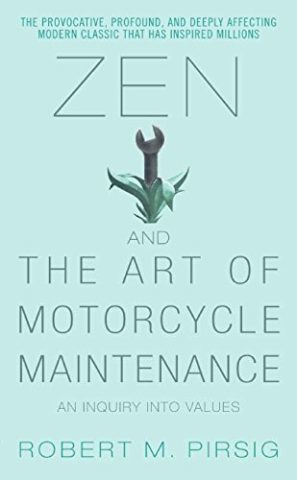
Sitting in front of me on my desk right now is the copy of Zen and the Art of Motorcycle Maintenance I bought in August, 1974, and carried with me on my own motorcycle trip from Buffalo, out to Indiana, down to Baltimore, and finally up to New York City, where I stayed for 6 years. I was a year out of college, still trying to figure out what to do when I “grew up,” and Pirsig’s book came out shortly before I started my trip. Though at the time it seemed clichéd to take such a book on a motorcycle trip, and it was one more heavy thing to add to the already overstuffed pack strapped behind me on my little Yamaha 200, it turned out to be exactly the right thing to guide my inner journey, and even helped me diagnose and repair a motorcycle issue that led to my seizing a piston in Ohio.
It’s been 42 years since I read this book, and when I flip through it and see the sentences I underlined I’m sometimes puzzled by those choices, but it still leaves a feeling in my chest of almost indescribable longing, wonder, excitement, and calm. I can’t say many other books have had as lingering an effect, so this one makes the “Books that have inspired me” list.
Let Us Now Praise Famous Men, by James Agee and Walker Evans

James Agee and Walker Evans’ book of lyrical prose and hard-edged images was one of three books I brought with me when I moved to NYC in 1974, and one of a short list that had a major influence on me as a young writer. This was the first book I’d encountered that looked and felt deeply about a group of people largely ignored by the rest of the country, and it directly influenced my own several-year project photographing and interviewing the people I encountered living or working the streets of Manhattan and Brooklyn. I have yet to encounter anything that quite matches it in its powerful synergy of prose and photographs.
The Drama of the Gifted Child, by Alice Miller
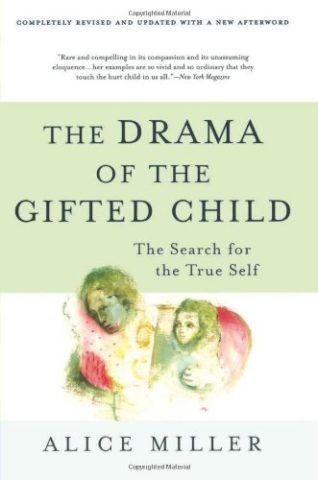
I encountered this book in the mid-80s, a year or two into my first serious round of psychotherapy, and it was as if all the lights suddenly went on in a previously dimly lit room. Although it’s been a long time since I read The Drama of the Gifted Child, the shock of recognition – of the dynamics of my family, of my role in it, of the roles filled by my siblings, my mother, and especially by my father – became starkly revealed in a way no amount of discussion or dream analysis had approached. There’s something compelling about how some authors can strip away the confusion surrounding a complex psychological set of interactions and lay bare the bones of it, and Miller did that for me in this book.
Iron John, by Robert Bly

In Iron John, Bly translates, interprets, and expands a little-known Grimm’s Fairy Tale that depicts the path of a young prince growing into manhood. Bly uses the folktale as a frame for the larger story of how men of the last few generations have been taught to be men mainly by women and, more recently, also by the media. He portrays what has been lost and gained as a result. I read this book shortly after it was published in 1990 and found it to be the brightest lens on men, and what was difficult about being one, I’d ever seen.
Bly, a poet I’d first encountered at Cornell University at an anti-war rally, not only precisely and lyrically delineated mens’ problems, he also outlined a solution and taught it to large gatherings of men. (I attended a weekend workshop he held at Brandeis University.) Bly sought to bring together older and younger men to promote a return to a male apprenticeship process lost in the industrial revolution and the nuclear family. His aim was to help us break out of our extended boyhood. Bly’s book and his gatherings of men greatly enlarged, for a time, a nascent Men’s Movement that roughly paralleled the Women’s Movement of the 60s and early 70s. Today, I still recommend Iron John to male clients, and also to women who want to understand men.
Life After Life, by Raymond Moody Jr.
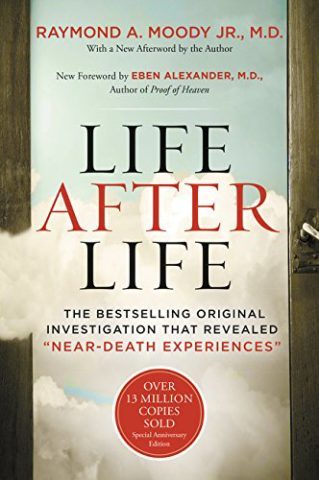
In 1993, I had a near-death experience as a result of a series of medical errors. At the time, I’d never heard of a near-death experience. This was the first book I read that opened my eyes to what I had gone through. Several others followed, as well as a subscription to the International Journal of Near-Death Studies, membership in a group of near-death survivors, and eventually, transitioning from a PhD program in English to one in counseling psychology. Nearly a quarter of a century later, it’s still not clear to me exactly what the meaning of an NDE is, but Moody’s book did a credible job of documenting the phenomenon, one I still find more valuable than the extraordinary claims of those who have more recently, and famously, written about near-death experiences.
Being Peace, by Thich Nhat Hanh
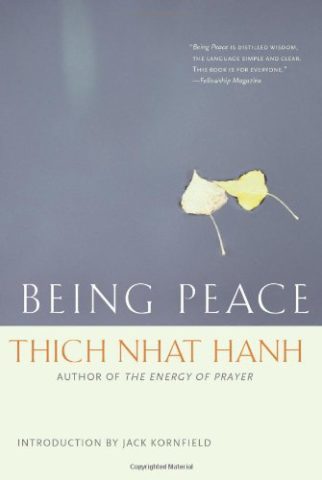
I read Being Peace about 20 years ago, and then again in 2014. It was the first book by the Buddhist teacher and writer for me, and it is, I think, a seminal work, capturing in one short volume the essence of what he would go on to explicate in his many books since this one. The first time I read this book, I had never heard of Thich Nhat Hanh and was attracted to the title. I read it in a couple of sittings. The second time through, I read the book in short bursts, one section per week, in the company of other people who also follow Thich Nhat Hanh’s teachings. It took several months to complete the reading, and it was a far more profound experience. Each short segment has layers of meaning and emotion that take time to settle into the soul. Highly recommended as a first place to meet this wise teacher and his work.
Focusing, by Eugene Gendlin
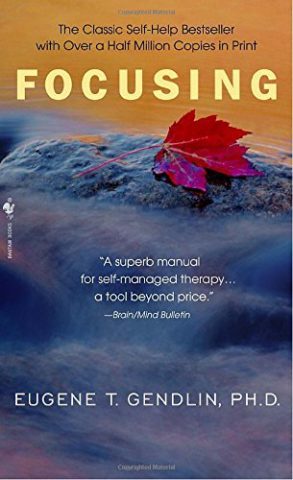
Although it was ten years or so between the time I bought Eugene Gendlin’s Focusing and when I actually began to use this technique in my personal life and my therapy practice, in many ways it is now at the heart of both. In the late 60s and early 70s, Gendlin teamed up with pioneer psychologist Carl Rogers to try to figure out why some people seemed to get better with therapy while others did not. After screening for all the factors one might suspect made the difference – therapeutic training and approach, experience, types of problems clients came in with, demographics, etc. – it turned out that the dominant factor was something clients either came into therapy doing (and they got better) or didn’t do (and they usually didn’t). Gendlin realized that this factor was a natural human quality, and he created this book, and many others, to help those of us who didn’t natively do it learn how.
I have practiced Focusing for many years, and I have taught it to a wide variety of clients so they can do it themselves. Easier to do than to explain, Gendlin’s Focusing handbook nevertheless does an excellent job of summarizing the rationale behind it, the technique itself, and what to do if things don’t seem to be working.
The Highly Sensitive Person, by Elaine N. Aron
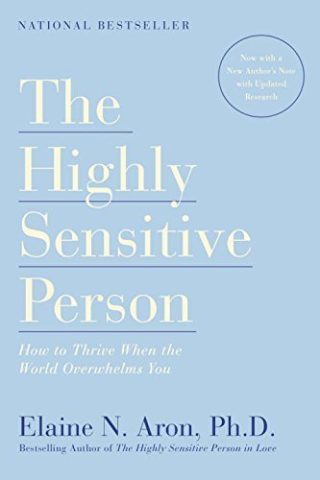
Aron’s book The Highly Sensitive Person is one I wish had been written decades ago. It helped me understand that I’m a “highly sensitive person” – someone who takes in, on both a sensory and emotional level, more than most people do. There are a lot of us – according to Aron, some 20% of the population, a figure validated by an independent study done by Harvard and the University of Toronto a few years after Aron’s book was published. Being “highly sensitive” is a blessing and a curse: We can’t screen much out, so all kinds of things bother us that don’t bother most people, but we also have more data available at a conscious level, and sometimes we can do things with that data that people who automatically screen more out cannot. The simple test for this type of sensitivity is on Aron’s website, hsperson.com, and her practical advice for how to cope with this characteristic is a uniquely valuable resource.
When I Say No, I Feel Guilty, by Manuel J. Smith
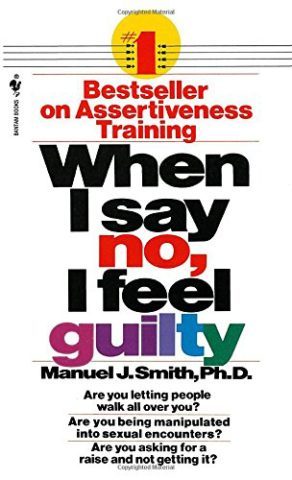
This is the book I most often take off my shelf and show to clients. Even if all you learn from it is the “Broken Record” technique for saying no and sticking to it, and you accept that his “Assertiveness Bill of Rights” really does apply to you, When I Say No, I Feel Guilty will change your life for the better. I wish Manuel Smith had written it 50 years ago!
The Anxiety & Phobia Workbook, by Edmund J. Bourne
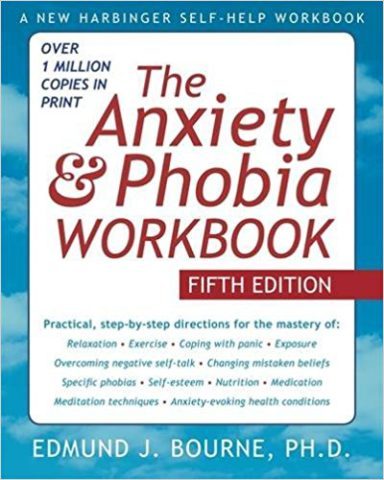
This book is the most helpful book on anxiety I’ve encountered, and one I pull off the shelf to show a client almost as frequently as When I Say No, I Feel Guilty. Bourne knows anxiety from the inside out, and his comprehensive work on the subject is a balanced approach comprising psychoeducation, tools, and strategies that anyone suffering from anxiety can benefit from. His approach to understanding and healing the damage from mistaken beliefs alone is enough to make the book a worthwhile purchase. His chapter on panic attacks has helped many of my clients completely overcome this disorder. A must-read for therapists and anxiety sufferers alike.
Art & Fear, by David Bayles and Ted Orland
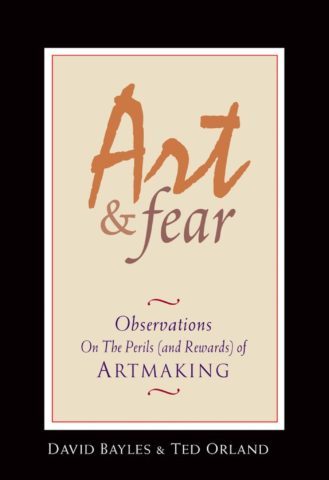
Art & Fear is the most concise and friendly companion to anyone trying to define themselves as an artist that I have so far encountered. In a series of concise essays, Bayles and Orland (a photographer and potter, respectively) put forth most the anxiety-provoking aspects of being an artist and offer sound, accessible wisdom on how to stay grounded, motivated, and focused.
The War of Art, by Steven Pressfield
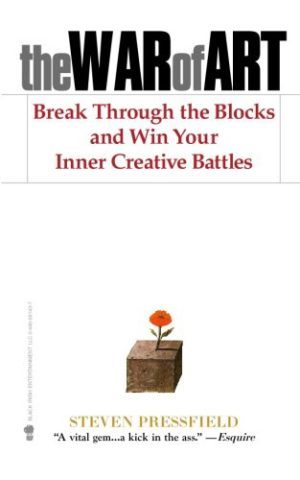
Pressfield’s concise assault on Resistance and his distinction between the professional and the amateur artist helped me break through some substantial blocks along the way to creating my book Paths to Wholeness and inspired at least one artist I know to start making the transition between hobbyist painter to pro. Highly recommended for any creative person who feels held back by the mundane. His last paragraph is a terrific sendoff, the culmination of all that came before: “Creative work is not a selfish act or a bid for attention on the part of the actor. It’s a gift to the world and every being in it. Don’t cheat us of your contribution. Give us what you’ve got.”
Paths to Wholeness: Fifty-Two Flower Mandalas, by David J. Bookbinder
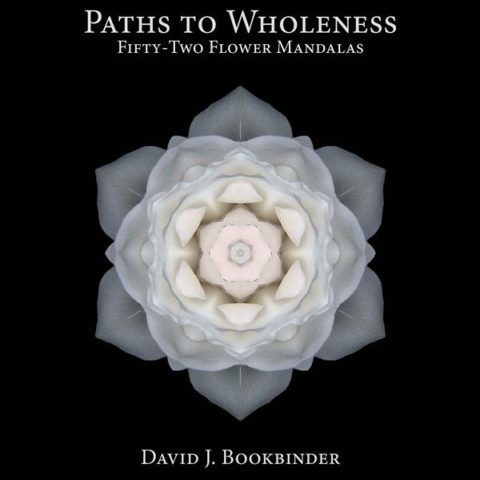
If you don’t blow your own horn, journalist Jimmy Breslin once said, nobody else will. Writing Paths to Wholeness was one of the most powerful self-help activities I’ve engaged in, in a life of practicing self-help. In it, I tried to distill into one volume the best of what I’ve learned as a therapist, writer, photographer, and person. Paths to Wholeness contains 52 potent essays and striking Flower Mandala images by a spiritual seeker (me!) who, having traversed his own winding path toward awakening, now guides others to find balance, build resilience, overcome fear, and to expand their hearts by listening deeply, inspiring hope, and more fully loving.
P.S. If you find what you read here helpful, please forward it to others who might, too. Or click one of the buttons on the left side of this page.
Books:
Paths to Wholeness: Fifty-Two Flower Mandalas
Print: Amazon – BookBaby – B&N – Books-a-Million
eBook: Kindle – Nook – iTunes – Kobo
NOTE: Paths to Wholeness is now available at the following Boston-area bookstores and libraries:
Cabot Street Books & Cards, 272 Cabot Street, Beverly, MA 01915
The Bookshop, 40 West Street, Beverly Farms, MA 01915
Boston Public Library (main branch)
Brookline Public Library (main branch)
NOBLE Public Libraries (Beverly Farms and Salem)
MVLC Public Libraries (Hamilton-Wenham)
Please let me know if you find it in other locations!
Also available:
52 (more) Flower Mandalas: An Adult Coloring Book for Inspiration and Stress Relief
52 Flower Mandalas: An Adult Coloring Book for Inspiration and Stress Relief
Paths to Wholeness: Selections (free eBook)
Follow me on:
Bloglovin’
StumbleUpon
Medium
Copyright 2017, David J. Bookbinder
http://www.transformationspress.org
http://www.davidbookbinder.com
http://www.flowermandalas.org
P.S. If you find what you read here helpful, please forward it to others who might, too. Or click one of the buttons on the left side of this page.
June 7, 2017
Stay Sane with the Personal Craziness Index

To stay sane in an insane world, we need more than new tools and techniques. To maintain sanity, we also have to keep doing the things that got us there.
The final piece of the resilience puzzle is to build Balancer-enhancing attitudes and practices into our daily lives, so they are as much a part of our routines as breathing. Then we keep watch to make sure we’re staying on track.
When Balancer incorporates the new tools ReBalancer uses, it gets stronger. Mini self-care then becomes something we do every day, not just when stress is high. The Experiment becomes an experimental attitude we carry with us 24/7. Meditation becomes a daily activity. Self-compassion and acceptance become the new norm. And so on.
But changing habits takes time. If we don’t stay on top of our game, we run the risk of drifting back to our old, less resilient ways. UnBalancer loves when that happens! So we need a method for regularly checking in with ourselves to make sure we’re using all the shiny new tools and techniques we worked so hard to acquire.
To help stay on track, I recommend using a monitoring tool called the Personal Craziness Index (PCI). The PCI was first presented by author Patrick J. Carnes in his groundbreaking book on addiction recovery, A Gentle Path Through the Twelve Steps. But it turns out that the PCI has uses beyond maintaining sobriety, and one of them is to monitor resilience.
The PCI is a universal tracking tool that can be used by anyone to monitor and maintain balance. It relies on the fact that in both subtle and obvious ways we respond to aspects of our lives differently when we’re in balance and when we’re not.
The PCI is a build-it-yourself tool. In each of 10 major life areas, the PCI lists three indicators of how we act when we are in balance. Then we track the most significant ones – the ones that most clearly indicate whether we are in or out of balance – every day.
If we notice we’re slipping back into unbalanced behaviors, chances are good we are headed for a major tilt in the near future. What’s nice about the PCI is that corrective actions are built into it. All we have to do to restore balance is resume any balancing activities we’re no longer doing, and stop doing the unbalancing activities that sneaked back in.
For instance, suppose that in the “Health” category we wrote that when we’re feeling balanced, we go to the gym three times a week, cook our own meals, and sleep at least seven hours per night. Although each of these actions alone may seem unimportant, as indicators that Balancer is humming along smoothly they are invaluable.
When we notice we’re skipping the gym, picking up junk food, or skimping on sleep, we become aware that we’re also becoming more vulnerable to imbalance. At this stage, because we’ve given up only a little ground, out-maneuvering UnBalancer is easy: we will ourselves to return to the gym, cook our meals, and get more sleep, and thus reverse the downward slide.
Detecting mild imbalance before UnBalancer gathers enough strength to pull us under is much easier than restoring balance once we’ve been toppled.
In 12-step recovery programs, the phrase “fake it till you make it” expresses the idea of using our will to assume new, more self-actualizing behaviors and attitudes. The PCI helps us “fake it till we make it” when the amount of willpower that’s required to keep personal craziness at bay is still small. Then we can go forward, Balancer unhindered, UnBalancer thwarted once again.
What to do:
Create Your Own Personal Craziness Index. Listed below are 10 suggested categories for the Personal Craziness Index. If some of these categories don’t fit your situation, you can substitute others that do. Under each category, write 3 indicators that you are in a good place – list either things you do that keep you in positive territory, or things you don’t do that also show you are functioning well. For example, under Health/Hygiene you might list “exercise 3x per week” as something you do to stay fit, or “don’t eat junk food” as a reminder to avoid unhealthy eating.
Track 7 indicators. Choose the 7 indicators, from any of these 10 categories, that most clearly show that you’re maintaining your defenses against personal craziness. At the end of each day, tally up how you did. Give yourself a score from 1 to 7, where “7” is “I’m doing all the positive things / not doing any of the negative things” and “0” is “I’m not doing any of the positive things / doing all of the negative things.” Keep a daily log. NOTE: You get a “0” for days you don’t bother to check!
If your score dips below 7, reverse the trend. If your numbers start dropping, reverse the trend by resuming the positives on your PCI and avoiding the negatives. When your Personal Craziness Index is restored, your personal craziness will, likewise, diminish, your personal sanity restored.
Personal Craziness Index

P.S. If you find what you read here helpful, please forward it to others who might, too. Or click the social share and email buttons on this page.
Related Posts:
The Under Toad and the UnBalancer
The Balancer/ReBalancer Tag Team
A Mini-Lesson on Mini Self-Care
Gyroscopes and Personal Flywheels
Hanging in the Balance
Balancing the Books
The Experiment
How to Design an Experiment
Build Your Resilience in 6 Steps
How to Rebalance Your Brain in 3 Easy Steps
How to Boost Connections and Support
Handling Change, Part I: Radical Acceptance and Self-Compassion
Handling Change, Part II: Forgiveness and Self-Forgiveness
Handling Change, Part III: Creative Approach and Experimental Attitude
Three Ways to Mix Mindfulness into Your Life
Stay Sane with the Personal Craziness Index
Books:
From Paths to Wholeness: Fifty-Two Flower Mandalas
PATH: “If you don’t know where a path goes, it’s hard to take the first step. When we are on a path with heart, the going may be no easier than when we are on another path. But we don’t mind. We sense that we are not just passing time because we can feel the path taking us where we need to go. And when we come to the end of our days, we know that our time on the planet has not been squandered.”
Print: Amazon – BookBaby – B&N – Books-a-Million
eBook: Kindle – Nook – iTunes – Kobo
NOTE: Paths to Wholeness is now available at the following Boston-area bookstores and libraries:
Cabot Street Books & Cards, 272 Cabot Street, Beverly, MA 01915
The Bookshop, 40 West Street, Beverly Farms, MA 01915
Boston Public Library (main branch)
Brookline Public Library (main branch)
NOBLE Public Libraries (Beverly Farms and Salem)
MVLC Public Libraries (Hamilton-Wenham)
Please let me know if you find it in other locations!
Also available:
52 (more) Flower Mandalas: An Adult Coloring Book for Inspiration and Stress Relief
52 Flower Mandalas: An Adult Coloring Book for Inspiration and Stress Relief
Paths to Wholeness: Selections (free eBook)
Follow me on:
Bloglovin’
StumbleUpon
Medium
Copyright 2017, David J. Bookbinder
http://www.transformationspress.org
http://www.davidbookbinder.com
http://www.flowermandalas.org
P.S. If you find what you read here helpful, please forward it to others who might, too. Or click the social share and email buttons on this page.
Keep Your Sanity with the Personal Craziness Index
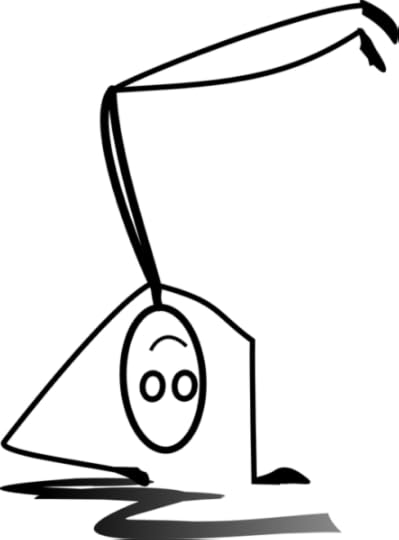
To stay sane in an insane world, we need more than new tools and techniques. To maintain sanity, we also have to keep doing the things that got us there.
The final piece of the resilience puzzle is to build Balancer-enhancing attitudes and practices into our daily lives, so they are as much a part of our routines as breathing. Then we keep watch to make sure we’re staying on track.
When Balancer incorporates the new tools ReBalancer uses, it gets stronger. Mini self-care then becomes something we do every day, not just when stress is high. The Experiment becomes an experimental attitude we carry with us 24/7. Meditation becomes a daily activity. Self-compassion and acceptance become the new norm. And so on.
But changing habits takes time. If we don’t stay on top of our game, we run the risk of drifting back to our old, less resilient ways. UnBalancer loves when that happens! So we need a method for regularly checking in with ourselves to make sure we’re using all the shiny new tools and techniques we worked so hard to acquire.
To help stay on track, I recommend using a monitoring tool called the Personal Craziness Index (PCI). The PCI was first presented by author Patrick J. Carnes in his groundbreaking book on addiction recovery, A Gentle Path Through the Twelve Steps. But it turns out that the PCI has uses beyond maintaining sobriety, and one of them is to monitor resilience.
The PCI is a universal tracking tool that can be used by anyone to monitor and maintain balance. It relies on the fact that in both subtle and obvious ways we respond to aspects of our lives differently when we’re in balance and when we’re not.
The PCI is a build-it-yourself tool. In each of 10 major life areas, the PCI lists three indicators of how we act when we are in balance. Then we track the most significant ones – the ones that most clearly indicate whether we are in or out of balance – every day.
If we notice we’re slipping back into unbalanced behaviors, chances are good we are headed for a major tilt in the near future. What’s nice about the PCI is that corrective actions are built into it. All we have to do to restore balance is resume any balancing activities we’re no longer doing, and stop doing the unbalancing activities that sneaked back in.
For instance, suppose that in the “Health” category we wrote that when we’re feeling balanced, we go to the gym three times a week, cook our own meals, and sleep at least seven hours per night. Although each of these actions alone may seem unimportant, as indicators that Balancer is humming along smoothly they are invaluable.
When we notice we’re skipping the gym, picking up junk food, or skimping on sleep, we become aware that we’re also becoming more vulnerable to imbalance. At this stage, because we’ve given up only a little ground, out-maneuvering UnBalancer is easy: we will ourselves to return to the gym, cook our meals, and get more sleep, and thus reverse the downward slide.
Detecting mild imbalance before UnBalancer gathers enough strength to pull us under is much easier than restoring balance once we’ve been toppled.
In 12-step recovery programs, the phrase “fake it till you make it” expresses the idea of using our will to assume new, more self-actualizing behaviors and attitudes. The PCI helps us “fake it till we make it” when the amount of willpower that’s required to keep personal craziness at bay is still small. Then we can go forward, Balancer unhindered, UnBalancer thwarted once again.
What to do:
Create Your Own Personal Craziness Index. Listed below are 10 suggested categories for the Personal Craziness Index. If some of these categories don’t fit your situation, you can substitute others that do. Under each category, write 3 indicators that you are in a good place – list either things you do that keep you in positive territory, or things you don’t do that also show you are functioning well. For example, under Health/Hygiene you might list “exercise 3x per week” as something you do to stay fit, or “don’t eat junk food” as a reminder to avoid unhealthy eating.
Track 7 indicators. Choose the 7 indicators, from any of these 10 categories, that most clearly show that you’re maintaining your defenses against personal craziness. At the end of each day, tally up how you did. Give yourself a score from 1 to 7, where “7” is “I’m doing all the positive things / not doing any of the negative things” and “0” is “I’m not doing any of the positive things / doing all of the negative things.” Keep a daily log. NOTE: You get a “0” for days you don’t bother to check!
If your score dips below 7, reverse the trend. If your numbers start dropping, reverse the trend by resuming the positives on your PCI and avoiding the negatives. When your Personal Craziness Index is restored, your personal craziness will, likewise, diminish, your personal sanity restored.
Personal Craziness Index

Related Posts:
The Under Toad and the UnBalancer
The Balancer/ReBalancer Tag Team
A Mini-Lesson on Mini Self-Care
Gyroscopes and Personal Flywheels
Hanging in the Balance
Balancing the Books
The Experiment
How to Design an Experiment
Build Your Resilience in 6 Steps
How to Rebalance Your Brain in 3 Easy Steps
How to Boost Connections and Support
How to Handle Change with Ease
Three Ways to Mix Mindfulness into Your Life
Keep Your Sanity with the Personal Craziness Index
Books:
From Paths to Wholeness: Fifty-Two Flower Mandalas
PATH: “If you don’t know where a path goes, it’s hard to take the first step. When we are on a path with heart, the going may be no easier than when we are on another path. But we don’t mind. We sense that we are not just passing time because we can feel the path taking us where we need to go. And when we come to the end of our days, we know that our time on the planet has not been squandered.”
Print: Amazon – BookBaby – B&N – Books-a-Million
eBook: Kindle – Nook – iTunes – Kobo
NOTE: Paths to Wholeness is now available at the following Boston-area bookstores and libraries:
Cabot Street Books & Cards, 272 Cabot Street, Beverly, MA 01915
The Bookshop, 40 West Street, Beverly Farms, MA 01915
Boston Public Library (main branch)
Brookline Public Library (main branch)
NOBLE Public Libraries (Beverly Farms and Salem)
MVLC Public Libraries (Hamilton-Wenham)
Please let me know if you find it in other locations!
Also available:
52 (more) Flower Mandalas: An Adult Coloring Book for Inspiration and Stress Relief
52 Flower Mandalas: An Adult Coloring Book for Inspiration and Stress Relief
Paths to Wholeness: Selections (free eBook)
Follow me on:
Bloglovin’
StumbleUpon
Medium
Copyright 2017, David J. Bookbinder
http://www.transformationspress.org
http://www.davidbookbinder.com
http://www.flowermandalas.org
May 31, 2017
Three Ways to Mix Mindfulness into Your Life

At the risk of stating the obvious, in order for Balancer to keep us balanced, it’s helpful to do activities that explicitly promote … balance.
Mindfulness-based activities are at the top of the list. The term mindfulness, the state of being focused on the present moment, without judgement, has become part of the zeitgeist in the past several years, and for good reason.
The benefits of mindfulness-based activities are physical, emotional, and psychological. Mindfulness has been demonstrated to:
Relax muscles and decrease blood pressure
Reduce rumination, stress, anxiety, and emotional reactivity
Promote empathy and self-compassion
Improve working memory, focus, self-insight, and intuition
Mindfulness works, in part, because of changes that occur in the body and the brain. But over time, mindfulness also reminds us that we don’t have to keep riding every mental train we find ourselves on. When we notice we’ve been kidnapped by a thought, worry, emotion, physical sensation, or distraction, we can get off that train and return to the station.
Three basic ways to develop mindfulness include:
Mindfulness-based activities. Imported from Eastern cultures, practices specifically developed to increase mindfulness include sitting and walking meditation, yoga, tai chi, and chi-gong.
Recreational activities with a mindfulness intention. When practiced with a mindful, in-the-moment intention, activities such as running, working out, gardening, bicycling, and even motorcycling can promote mindfulness.
Approaching mundane tasks with a mindfulness intention. Household chores such as washing the dishes, vacuuming, or folding laundry become a form of meditation when we allow ourselves to pay attention to the process of the task itself and our in-the-moment responses, rather than hurrying through it to get to the next thing.
Meditation is the easiest to describe fully in writing, but much of what I say here applies to other Eastern-based mindfulness practices, too
Many people think meditation is complicated or difficult, but it isn’t. It’s literally as simple as breathing, and a good place to begin meditating is with a three-breath meditation repeated throughout the day.
At a retreat I attended years ago, I was introduced to the concept of the Mindfulness Bell. At random times throughout each day, someone sounded a bell, and we all had to stop what we were doing and take three slow, abdominal breaths. (When you take an abdominal breath, your belly goes out when you inhale and in when you exhale, the opposite of how most of us breathe. The result is slower, deeper, more concentrated breathing.)
When the bell rang, we halted in mid-sentence, mid-stride, mid-chew, as if we were in a big game of freeze tag. At first this interruption annoyed me. I was in the midst of spiritual evolution, damn it! But by the time the retreat ended, I’d embraced these “interruptions.” Each time the bell sounded, I was able to stop what I was doing, saying, or thinking and reset. Did I need to be thinking or feeling what I was thinking and feeling? Did I want to do what I was about to do? Learning to be still in the midst of life, even briefly, helped me reevaluate these choices.
I have often recommended this three-breath meditation to clients, suggesting that they use any interrupting sound, such as a car horn or a phone’s ringing, as a substitute for the Mindfulness Bell.
The effects of this simple change can be revolutionary.
One client whose life was ruled by chaos found this practice to be more valuable than anything else we had done in therapy. At a street corner on the way to work, hearing the Mindfulness Bell of a car horn, she could think, “I don’t really want to waste my time partying tonight.” About to leave for a bar, pausing on the first ring of her cell phone, she could see how the evening would play out and decide, “Not this time.” Hearing a siren blare in the midst of pangs of guilt or shame, she could choose to forgive herself.
An anxious client found a Mindfulness Bell app for his smartphone and programmed it to ring randomly throughout the day. He was often on the road for his job, and while driving his mind inevitably went to worrying. When the bell rang, he took three breaths and allowed himself to return to a more centered place. Over time, not only did his anxiety lessen, but tuned in to his true desires and made major positive changes in his career and relationships.
I also continue this practice. When I step into my office and turn on my computer, I hear its Mindfulness Bell, pause for a moment, and imagine putting on an invisible jacket worn only by my best self. Brief meditations throughout the day help me shift gears between clients, return to center, and reinhabit that best self again and again.
Once you get the hang of the three-breath meditation, consider adding other forms of meditation to your day.
Sitting meditation is usually done with eyes closed, seated on a cushion or chair, in a quiet space. A breath-oriented meditation is one simple, time-honored approach. Focus on the intake and exhalation of each breath, imagining the air entering your body, expanding your lungs, and then leaving it as you exhale. If your attention drifts to something else, just gently bring it back to your breath. Sitting in the morning for 10-20 minutes helps to start the day in a more centered way, but if the mornings won’t work for you, any time of the day is okay.
Walking meditation is another way to reinforce mindfulness. Traditionally, it’s practiced by walking slowly back and forth or in a circle while focusing on the breath, the feeling of your feet touching and lifting from the ground, and the physical sensations you take in from your surroundings. However, if you have a regular walk you take recreationally, or even a short walk from the parking lot to your job, you can do these in the same mindful manner with the same centering effects.
Mindful recreation. Applying mindful attention to an activity like swimming or running can generate the same restorative and balance-enhancing effects as walking meditation. I recommend starting first with mindful walking, and then, when you feel comfortable with the cycle of losing attention and restoring it, experiment with translating this mindful approach to your chosen activity.
Mindful attitude. Another easy way to incorporate mindfulness into you life is to perform daily tasks with a mindful attitude. Taking a shower, brushing your teeth, and eating, if done without distraction and with a focus on your actual actions, can become a regular mindfulness practice. Even chores, done mindfully, can become centering meditations.
The “washing the dishes” meditation is often suggested by meditation teachers and is one I do myself. As a child, my brother Mike and I did most of the household chores, including washing dishes and putting them away, and as a result I’ve never much liked that task. So I’ve turned it into a meditation. I let the dishes pile up during the day and then wash them deliberately at night. I pay attention to the sound of the running water, the feel of the soap and sponge, the transformation of each dish from dirty to clean. The dish washing takes the same few minutes as it would if I were listening to music, thinking about what else I wanted to do that evening, or just pushing through an unpleasant chore. But instead of feeling slightly agitated during or afterward, as I once did, now I feel relaxed and refreshed.
Not long ago, I discovered that this specific meditation had potential side benefits. I was working with an anxious 12-year-old boy, the oldest of several siblings. His parents wanted me to teach him to meditate. So we tried sitting meditation, but he couldn’t sit still. We tried walking meditation, but he found it boring. Then I thought of dish-washing meditation. I gathered up the few cups and dishes in my office and put them in the sink, and I had him toss in a few of the washable toys. “Now,” I said, “squirt some dish soap on the sponge, and I’ll show you how to do dish-washing meditation.” I explained the process and for about five minutes he carefully and attentively washed the dishes and the toys. As he dried the last dish, he turned to me and said he felt much calmer. Then he added, gleefully, “And my mother will love this! I have a big family, and we have a lot of dirty dishes!”
Try turning any chore you regularly have to do, but don’t much care for, into a meditation and you may experience the same mini-transformation – and perhaps also the same glee!
What to do:
Mindfulness practices. Try an Eastern-based practice designed to enhance mindfulness such as sitting or walking meditation, yoga, tai chi, or chi-gong. These practices have been demonstrated to reduce stress and anxiety, improve focus, relax the body, and increase resilience. Consider starting with a simple three-breath meditation, as described above.
Mindful recreation. If you are already a runner, swimmer, walker, bicyclist, or participate in another recreational activity, approaching what you already do with a mindfulness attitude will generate many of the same beneficial effects as a mindfulness practice such as walking meditation. Pay attention to each moment and, if you find yourself drifting, bring your attention back to the present. Then rinse, lather, and repeat (as they used to say on shampoo bottles).
Mindful chores. Instead of just powering through daily tasks and chores, practice mindful dish washing, vacuuming, laundry folding, tooth brushing, and notice the subtle benefits, both in the moment and over time.
COMING NEXT: Keep Your Sanity with the Personal Craziness Index
Related Posts:
The Under Toad and the UnBalancer
The Balancer/ReBalancer Tag Team
A Mini-Lesson on Mini Self-Care
Gyroscopes and Personal Flywheels
Hanging in the Balance
Balancing the Books
The Experiment
How to Design an Experiment
Build Your Resilience in 6 Steps
How to Rebalance Your Brain in 3 Easy Steps
How to Boost Connections and Support
How to Handle Change with Ease
Three Ways to Mix Mindfulness into Your Life
Books:
From Paths to Wholeness: Fifty-Two Flower Mandalas
DREAMS: “None of us has the nine lives of the proverbial cat, but we can fully exploit this one’s possibilities by remembering the dreams of our youth and using them as a beacon to show us who we really are and what we can look forward to becoming.”
Print: Amazon – BookBaby – B&N – Books-a-Million
eBook: Kindle – Nook – iTunes – Kobo
NOTE: Paths to Wholeness is now available at the following Boston-area bookstores and libraries:
Cabot Street Books & Cards, 272 Cabot Street, Beverly, MA 01915
The Bookshop, 40 West Street, Beverly Farms, MA 01915
Boston Public Library (main branch)
Brookline Public Library (main branch)
NOBLE Public Libraries (Beverly Farms and Salem)
MVLC Public Libraries (Hamilton-Wenham)
Please let me know if you find it in other locations!
Also available:
52 (more) Flower Mandalas: An Adult Coloring Book for Inspiration and Stress Relief
52 Flower Mandalas: An Adult Coloring Book for Inspiration and Stress Relief
Paths to Wholeness: Selections (free eBook)
Follow me on:
Bloglovin’
StumbleUpon
Medium
Copyright 2017, David J. Bookbinder
http://www.transformationspress.org
http://www.davidbookbinder.com
http://www.flowermandalas.org
May 24, 2017
How to Handle Change with Ease
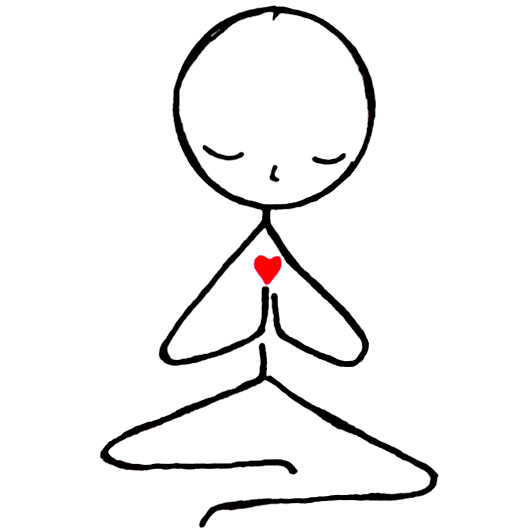
Emotional adaptability is the ability to respond to changing circumstances and events without being unduly shaken by these changes. It’s a Balancer characteristic and a key component of resilience. Those of us who are emotionally adaptable can bend with the wind, like saplings. Those of us who are less adaptable are likely to strain and crack as we struggle to maintain equilibrium.
Emotional adaptability varies from person to person and can also be impacted by life events. Most of us are less emotionally adaptable when we are under constant or unusual stress. Those of us raised in a rigid environment, with fixed ideas of how we or the world works, may also be less adaptable. Being attached to expectations of ourselves, others, or how things ought to be also limits emotional adaptability.
The good news is that there are many ways to become more adept at responding to change.
Some of the best strategies for enhancing emotional adaptability include practices that promote an accepting attitude, increase compassion and self-compassion, and enable forgiveness and self-forgiveness. Creative activities and an experimental attitude are also helpful in increasing our adaptability to change.
Radical Acceptance
Although chronic stress, adversity, and other actions of the UnBalancer can sometimes make us more emotionally rigid, for many of us the most persistent obstacle to emotional adaptability is difficulty with accepting things as they are.
When we don’t accept how things really are, we live in a false reality that we must constantly defend against the evidence. We may become preoccupied with a hypothetical future, worried that things won’t turn out the way we hope, or stuck in the past, consumed by resentments over things not turning out as we wanted them to.
When we’re struggling to defend this alternate reality, we have fewer resources to deal with what’s actually at hand. We’re too busy rebuilding our imagined reality to go with the flow, respond with compassion, or see the humor in our own situation.
In the absence of acceptance, there can be little or no forward movement. We grow older, and the external circumstances of our lives still change, but we can’t embrace them. As the Talking Heads put it, inside our heads it’s “the same as it ever was, same as it ever was, same as it ever was.”
Buddhist teacher Tara Brach recommends what she calls Radical Acceptance as a way to open ourselves to present reality. Radical acceptance means fully accepting our situations, feelings, limitations, and strengths. Radical acceptance is a prerequisite to meaningful change. As pioneering psychologist Carl Rogers observed, “The curious paradox is that when I accept myself just as I am, then I can change.” Tara Brach adds, “When we can meet our experience with Radical Acceptance, we discover the wholeness, wisdom and love that are our deepest nature.”
When we accept things as they are, we don’t have to struggle against their reality. We can radically accept our bodies, our pasts, our peers, our partners, our children, and the strengths and limitations of our own personalities, and then we can choose to try to change what can be changed, and to embrace what cannot.
Radical acceptance is a balm for difficult emotions such as envy, resentment, and frustration. We accept our present circumstances and what has led up to them, and we understand that railing against them won’t change anything. Radical acceptance is also an antidote to the lingering pain of misfortune. When we radically accept our losses, we are more open to the possible gains that may come from them. Then we can move on, recovered.
Radical acceptance can be as complex as accepting a traumatic loss or catastrophic event, or as simple as accepting the weather.
An example: I’ve lived in the U.S. Northeast most of my life. Here, the winters can be harsh. I have never liked cold weather or snow, and I’ve never been drawn to winter sports. Each year, as the days shorten and the nights grow longer, I have felt a sense of dread as winter approaches and a great sense of relief when I finally put away the snow shovel and hang up my winter coat. But this past winter just was. Autumn flowed into winter as it always does, and this time I was fine with it.
The weather acceptance switch flipped the previous summer during a meeting of the Buddhist study group I belong to. On an extraordinarily hot and humid evening, as we began our walking meditation, I was struggling with the discomfort of my shirt sticking to my back and the sweat beading on my forehead. Then our teacher said, “This is heat.” As we walked in silence, I pondered his observation, feeling into the reality of the present moment, and something shifted. The rest of that evening, and for all the other hot days that summer, heat was simply heat, not something to be dreaded or avoided. When the cold set in this winter, I thought, “This is cold.” When the snow fell, “This is snow.” When it melted, “This is Spring.” And as the summer heat approaches again, I remember, “This is heat.”
When we radically accept something, we don’t judge it. We don’t get angry, we don’t try to fight it, and we don’t resent it. We simply recognize that this is how it is, freeing up all the energy we might otherwise have expended on judging, fighting, anger, or resentment. Then we can take in, with renewed openness, whatever comes our way.
For more on Radical Acceptance, see Tara Brach’s book Radical Acceptance: Embracing Your Life With the Heart of a Buddha.
Compassion and Self-Compassion
Like Radical Acceptance, developing a compassionate attitude toward ourselves and others promotes emotional adaptability and increases responsiveness to our present reality.
Self-compassion is a term coined by psychologist Kristin Neff to describe extending to yourself the compassion you would feel for a good friend or someone you love.
Dr. Neff’s description of compassion and self-compassion is as eloquent and complete as any I have seen. “Having compassion for oneself is really no different than having compassion for others,” she writes. “Think about what the experience of compassion feels like. First, to have compassion for others you must notice that they are suffering. If you ignore that homeless person on the street, you can’t feel compassion for how difficult his or her experience is. Second, compassion involves feeling moved by others’ suffering so that your heart responds to their pain (the word compassion literally means to ‘suffer with’). When this occurs, you feel warmth, caring, and the desire to help the suffering person in some way. Having compassion also means that you offer understanding and kindness to others when they fail or make mistakes, rather than judging them harshly. Finally, when you feel compassion for another (rather than mere pity), it means that you realize that suffering, failure, and imperfection is part of the shared human experience. ‘There but for fortune go I.’
“Self-compassion,” she continues, “involves acting the same way towards yourself when you are having a difficult time, fail, or notice something you don’t like about yourself. Instead of just ignoring your pain with a ‘stiff upper lip’ mentality, you stop to tell yourself ‘this is really difficult right now, how can I comfort and care for myself in this moment?’”
Self-compassion is one of the most powerful tools for reducing critical self-talk. When we are compassionate toward ourselves, we don’t give ourselves a hard time and we don’t push our vulnerable feelings aside and “suck it up.” Instead, we treat our difficult emotions as if they were a baby crying inside us and do whatever we need in order to attend to it.
Practicing self-compassion helps us become more responsive not only to our own needs, but also to the needs of others. Released from the tyranny of our inner critics, we become more able to blossom into our full selves and, ironically, less self-centered and more compassionate toward others. We have more of ourselves to give away.
Extending compassion to others also enhances our emotional adaptability. Giving to others lets us become our best selves, even when we feel depleted. This principle underlies healing practices in many indigenous cultures, where the shaman chooses a sickly boy to become his apprentice. The boy becomes strong through healing his people, but he must continue to heal others in order to stay healthy himself.
In my work as a psychotherapist, I have found this healing/healer link also to be true. Regardless of what is going on in my life, when I get to my office and put on my imaginary “therapist jacket,” I become my best self, doing what I can to attend to the needs of my clients. Because I have been that best self all day, by evening the troubles of the morning have become smaller and more manageable. And the next day, I often awaken a little more emotionally adaptable, not only to my clients, but also to myself.
For more on self-compassion, including a quick test of your level of self-compassion, see Kristin Neff’s site self-compassion.org.
Forgiveness and Self-Forgiveness
Like acceptance and compassion, the ability to forgive ourselves and others can free us from what Romantic poet William Blake called “mind-forged manacles” – in this case, feelings such as anger, hatred, resentment, guilt, shame, and victimization. Liberation from these feelings through forgiveness can help us be more available in the present moment and more adaptable to its ever-changing conditions.
Forgiveness, however is sometimes difficult to achieve.
Some obstacles to forgiving are easy to understand. Forgiveness is hardest when there is ongoing harm. Before we can offer forgiveness, we must be safe; before we can ask to be forgiven, we must stop doing harm. Forgiveness is also challenging when injuries haven’t healed. Unhealed wounds can lock us into a pattern of attracting others who hurt us again, or they can imprison us in a self-protective shell that keeps out not only potential harm, but also healing.
But for many of us, the chief impediment to forgiveness is unwillingness. Our culture glorifies an “eye for an eye and a tooth for a tooth” tradition that spans millennia. Forgiveness – forgiving others, seeking forgiveness, even forgiving ourselves – is seen as weakness. If we have been hurt, we may feel, we should punish those who harmed us, and if we cannot, we should at least punish them in our hearts. If we have harmed others, we may feel that we should punish ourselves, hoping that self-punishment will prevent us from harming again.
Releasing ourselves from these vengeful emotions through forgiveness may seem unfamiliar and unsafe. But actually, refusing to forgive ourselves doesn’t guarantee we will not harm again, nor does refusing to forgive others punish those who have harmed us. Withholding forgiveness merely uses up energy that could be put to more life-affirming purposes.
Forgiving my father for our lifelong estrangement began with a dream I had several years after his death and concluded when I realized, finally, that I was no longer afflicted by what had been damaging in our relationship. I could then regard him with compassion, understand how his difficulties and limitations had shaped him, and forgive him for his part in our conflicts – and myself, for mine.
The most helpful tool I’ve encountered for fostering forgiveness is a Buddhist meditation popularized by psychologist and teacher Jack Kornfield. Within the safety of the meditation, it instructs us first to feel the pain of keeping our hearts closed and then offers gentle steps for opening them just enough to ask for forgiveness from those we have harmed, to forgive ourselves, and to forgive those who have harmed us. Cautioning that forgiveness may come slowly and cannot be forced, the meditation encourages a gradual letting go of the burdens of unforgiven acts, with each iteration lightening our load just a little, like a sigh of relief.
For more on forgiveness and self-forgiveness, see the “Forgiveness” chapter in my book Paths to Wholeness: Fifty-Two Flower Mandalas and Jack Kornfield’s Forgiveness Mediation.
Creative Approach
Creative activities – and the creative approach to life that often accompanies them – can also help us become more emotionally adaptable.
Creative activities are rewarding as outlets for self-expression. They feel good, they are centering, and they give us a sense of accomplishment. And they’re often fun! But besides these more obvious benefits, creative activities can also change the way we approach our lives.
When we work creatively, we dive deep. We pause, look at what we are making, check inside and ask “Is this working?” and then bring up something of value that we might otherwise never have discovered. As we pause/look/check/incorporate, we create something new and authentic.
Because our brains get better at doing whatever they do, the more we practice diving deep, the better we get at it. Regularly doing creative activities often leads to a more general diving deep, allowing us to become more proficient at sensing and incorporating the less obvious aspects of ourselves and the world around us. This increased facility for sensing and responding to the whole of our present circumstances makes us more aware of ourselves and our surroundings, and more adept at adapting to change.
When we make the effort to check in with our deeper natures, we also tend to forge ahead more surely. If we look only at our superficial thoughts and feelings, and we try to make a change, it’s as if we are trying to move an iceberg by pushing on the tip. We may manage to lean it over, but it will eventually spring back. Diving deep allows us to travel below the water’s surface in our mental/emotional submarine, where we can take in the whole iceberg, home in on its center of gravity, and exert our efforts exactly there. The movement that results may be smaller, but what moves stays moved.
I see this dive-deep/move-forward-surely process often in therapy. Clients who tend to make the most profound changes may begin a session by simply describing a situation. But then they pause, check in with some murkier, less clear part of themselves, and bring to the surface what they find. For instance, they may begin by describing a situation that made them angry. “When he did that,” they might say, “I was so mad that…” And then they pause. “Well, it wasn’t just that I was mad. I got mad, but really, I was hurt.” Then we can deal not only with the surface feeling of anger, but also with the deeper feeling of hurt that triggered it.
Engaging in a creative hobby can not only train the brain, but can lead to changes in what we do with our lives. A friend in the construction business for most of his career began to create small oil paintings a couple of years ago. He found the practice centering, calming, and self-reflective, so much so that now he is taking the necessary steps to become a professional artist – a reinvention.
If you’re already doing something creative, keep doing it! If not, experiment with different art forms. Begin with the forms of creativity you enjoy taking in. If you like to read, consider writing. If you like to listen to music, consider learning to play an instrument and/or composing. If you like to look at art, consider painting, photography, sculpture, pottery. If you like movies, consider acting – or making movies yourself. If you enjoy walking in gardens, consider starting one.
One of the best books on living more creatively is Julia Cameron’s The Artist’s Way: A Spiritual Path to Higher Creativity. For specific training in diving deep, both in life and in creative activities, see Eugene Gendlin’s work with Focusing at focusing.org and his concise handbook on the technique of Focusing, Focusing.
Experimental Attitude
As discussed in more depth in another post, maintaining an experimental attitude toward life keeps us more open to experiences and to other people and helps us be more resilient in the face of difficulties.
Acceptance frees us from unrealistic hope and unwarranted anxiety, self-compassion from self-criticism, and forgiveness from the weight of unforgiving.
Relieved of these burdens, we are more able to adopt an experimental attitude. We can face our lives with open minds, seeing them as ongoing experiments. When things shift in unanticipated ways, we can say, “That was my path, but this is my path now,” adapting to the present moment as it arrives. Instead of conforming to the limits of past patterns, we can try things out, see what happens, and adjust our view of reality – and our next steps – accordingly.
An experimental attitude gives our ReBalancers the power to craft new strategies on the fly whenever new challenges occur. These new strategies, once created, cannot be uncreated. They are always there, ready whenever we need them, helping us to feel confident that we can handle whatever unknowns life (and UnBalancer) hands us with curiosity, resourcefulness, and equanimity.
For more on the experimental attitude, see the blog posts The Experiment and How to Design an Experiment.
What to do:
Radically accept. The most essential step to adapting to change is to accept the change itself and your own responses to it. Accept who you are and your present circumstances and free up the energy that might otherwise be exhausted through struggling against reality. See Tara Brach’s book Radical Acceptance: Embracing Your Life With the Heart of a Buddha to more fully explore Radical Acceptance as a way of life.
Be compassionate and self-compassionate. Treat yourself with the compassion you would have for a dear friend and you will quiet your inner critic and also find yourself more able to respond authentically to change and to the needs of others. See Kristin Neff’s website self-compassion.org for more on self-compassion, and take her quick test to check out your own self-compassion level.
Forgive and self-forgive. To break free of the burden of what Romantic poet William Blake called “mind-forged manacles” such as anger, hatred, resentment, guilt, shame, and victimization, practice slowly forgiving yourself and others with Jack Kornfield’s Forgiveness Mediation. For more on forgiveness and self-forgiveness, see the “Forgiveness” chapter in my book Paths to Wholeness: Fifty-Two Flower Mandalas .
Create and dive deep. To train your brain to respond more fully to yourself and your surroundings, do something creative on a regular basis, then practice applying the dive-deep/move-forward-surely process of creative work to your daily life. See Julia Cameron’s book The Artist’s Way: A Spiritual Path to Higher Creativity for more on living creatively and Eugene Gendlin’s book Focusing for a way to integrate subconscious needs, wants, and desires into your conscious self.
Experiment. Maintain an experimental attitude toward life to stay open to experiences and to other people, and to grow ever more resilient in the face of difficulties. Experience your life as an ongoing experiment, rather than as a fixed path. For more on experiments and the experimental attitude, see the blog posts The Experiment and How to Design an Experiment.
COMING NEXT:
Related Posts:
The Under Toad and the UnBalancer
The Balancer/ReBalancer Tag Team
A Mini-Lesson on Mini Self-Care
Gyroscopes and Personal Flywheels
Hanging in the Balance
Balancing the Books
The Experiment
How to Design an Experiment
Build Your Resilience in 6 Steps
How to Rebalance Your Brain in 3 Easy Steps
How to Boost Connections and Support
How to Handle Change with Ease
Books:
From Paths to Wholeness: Fifty-Two Flower Mandalas
COURAGE: “The difference between those who successfully reach the end of their Hero’s Journeys and those who do not isn’t better opportunities, more strength, or superior allies, but the courage to get up and try again, even when the odds seem insurmountable and discouragement feels overwhelming.”
Print: Amazon – BookBaby – B&N – Books-a-Million
eBook: Kindle – Nook – iTunes – Kobo
NOTE: Paths to Wholeness is now available at the following Boston-area bookstores and libraries:
Cabot Street Books & Cards, 272 Cabot Street, Beverly, MA 01915
The Bookshop, 40 West Street, Beverly Farms, MA 01915
Boston Public Library (main branch)
Brookline Public Library (main branch)
NOBLE Public Libraries (Beverly Farms and Salem)
MVLC Public Libraries (Hamilton-Wenham)
Please let me know if you find it in other locations!
Also available:
52 (more) Flower Mandalas: An Adult Coloring Book for Inspiration and Stress Relief
52 Flower Mandalas: An Adult Coloring Book for Inspiration and Stress Relief
Paths to Wholeness: Selections (free eBook)
Follow me on:
Bloglovin’
StumbleUpon
Medium
Copyright 2017, David J. Bookbinder
http://www.transformationspress.org
http://www.davidbookbinder.com
http://www.flowermandalas.org
Handling Change, Part I: Radical Acceptance and Self-Compassion
Radical Acceptance and Self-Compassion

Emotional adaptability is the ability to respond to changing circumstances and events without being unduly shaken by these changes. It’s a Balancer characteristic and a key component of resilience. Those of us who are emotionally adaptable can bend with the wind, like saplings. Those of us who are less adaptable are likely to strain and crack as we struggle to maintain equilibrium.
Emotional adaptability varies from person to person and can also be impacted by life events. Most of us are less emotionally adaptable when we are under constant or unusual stress. Those of us raised in a rigid environment, with fixed ideas of how we or the world works, may also be less adaptable. Being attached to expectations of ourselves, others, or how things ought to be also limits emotional adaptability.
The good news is that there are many ways to become more adept at responding to change.
Some of the best strategies for enhancing emotional adaptability include practices that promote an accepting attitude, increase compassion and self-compassion, and enable forgiveness and self-forgiveness. Creative activities and an experimental attitude are also helpful in increasing our adaptability to change.
Radical Acceptance
Although chronic stress, adversity, and other actions of the UnBalancer can sometimes make us more emotionally rigid, for many of us the most persistent obstacle to emotional adaptability is difficulty with accepting things as they are.
When we don’t accept how things really are, we live in a false reality that we must constantly defend against the evidence. We may become preoccupied with a hypothetical future, worried that things won’t turn out the way we hope, or stuck in the past, consumed by resentments over things not turning out as we wanted them to.
When we’re struggling to defend this alternate reality, we have fewer resources to deal with what’s actually at hand. We’re too busy rebuilding our imagined reality to go with the flow, respond with compassion, or see the humor in our own situation.
In the absence of acceptance, there can be little or no forward movement. We grow older, and the external circumstances of our lives still change, but we can’t embrace them. As the Talking Heads put it, inside our heads it’s “the same as it ever was, same as it ever was, same as it ever was.”
Buddhist teacher Tara Brach recommends what she calls Radical Acceptance as a way to open ourselves to present reality. Radical acceptance means fully accepting our situations, feelings, limitations, and strengths. Radical acceptance is a prerequisite to meaningful change. As pioneering psychologist Carl Rogers observed, “The curious paradox is that when I accept myself just as I am, then I can change.” Tara Brach adds, “When we can meet our experience with Radical Acceptance, we discover the wholeness, wisdom and love that are our deepest nature.”
When we accept things as they are, we don’t have to struggle against their reality. We can radically accept our bodies, our pasts, our peers, our partners, our children, and the strengths and limitations of our own personalities, and then we can choose to try to change what can be changed, and to embrace what cannot.
Radical acceptance is a balm for difficult emotions such as envy, resentment, and frustration. We accept our present circumstances and what has led up to them, and we understand that railing against them won’t change anything. Radical acceptance is also an antidote to the lingering pain of misfortune. When we radically accept our losses, we are more open to the possible gains that may come from them. Then we can move on, recovered.
Radical acceptance can be as complex as accepting a traumatic loss or catastrophic event, or as simple as accepting the weather.
An example: I’ve lived in the U.S. Northeast most of my life. Here, the winters can be harsh. I have never liked cold weather or snow, and I’ve never been drawn to winter sports. Each year, as the days shorten and the nights grow longer, I have felt a sense of dread as winter approaches and a great sense of relief when I finally put away the snow shovel and hang up my winter coat. But this past winter just was. Autumn flowed into winter as it always does, and this time I was fine with it.
The weather acceptance switch flipped the previous summer during a meeting of the Buddhist study group I belong to. On an extraordinarily hot and humid evening, as we began our walking meditation, I was struggling with the discomfort of my shirt sticking to my back and the sweat beading on my forehead. Then our teacher said, “This is heat.” As we walked in silence, I pondered his observation, feeling into the reality of the present moment, and something shifted. The rest of that evening, and for all the other hot days that summer, heat was simply heat, not something to be dreaded or avoided. When the cold set in this winter, I thought, “This is cold.” When the snow fell, “This is snow.” When it melted, “This is Spring.” And as the summer heat approaches again, I remember, “This is heat.”
When we radically accept something, we don’t judge it. We don’t get angry, we don’t try to fight it, and we don’t resent it. We simply recognize that this is how it is, freeing up all the energy we might otherwise have expended on judging, fighting, anger, or resentment. Then we can take in, with renewed openness, whatever comes our way.
For more on Radical Acceptance, see Tara Brach’s book Radical Acceptance: Embracing Your Life With the Heart of a Buddha.
Compassion and Self-Compassion
Like Radical Acceptance, developing a compassionate attitude toward ourselves and others promotes emotional adaptability and increases responsiveness to our present reality.
Self-compassion is a term coined by psychologist Kristin Neff to describe extending to yourself the compassion you would feel for a good friend or someone you love.
Dr. Neff’s description of compassion and self-compassion is as eloquent and complete as any I have seen. “Having compassion for oneself is really no different than having compassion for others,” she writes. “Think about what the experience of compassion feels like. First, to have compassion for others you must notice that they are suffering. If you ignore that homeless person on the street, you can’t feel compassion for how difficult his or her experience is. Second, compassion involves feeling moved by others’ suffering so that your heart responds to their pain (the word compassion literally means to ‘suffer with’). When this occurs, you feel warmth, caring, and the desire to help the suffering person in some way. Having compassion also means that you offer understanding and kindness to others when they fail or make mistakes, rather than judging them harshly. Finally, when you feel compassion for another (rather than mere pity), it means that you realize that suffering, failure, and imperfection is part of the shared human experience. ‘There but for fortune go I.’
“Self-compassion,” she continues, “involves acting the same way towards yourself when you are having a difficult time, fail, or notice something you don’t like about yourself. Instead of just ignoring your pain with a ‘stiff upper lip’ mentality, you stop to tell yourself ‘this is really difficult right now, how can I comfort and care for myself in this moment?’”
Self-compassion is one of the most powerful tools for reducing critical self-talk. When we are compassionate toward ourselves, we don’t give ourselves a hard time and we don’t push our vulnerable feelings aside and “suck it up.” Instead, we treat our difficult emotions as if they were a baby crying inside us and do whatever we need in order to attend to it.
Practicing self-compassion helps us become more responsive not only to our own needs, but also to the needs of others. Released from the tyranny of our inner critics, we become more able to blossom into our full selves and, ironically, less self-centered and more compassionate toward others. We have more of ourselves to give away.
Extending compassion to others also enhances our emotional adaptability. Giving to others lets us become our best selves, even when we feel depleted. This principle underlies healing practices in many indigenous cultures, where the shaman chooses a sickly boy to become his apprentice. The boy becomes strong through healing his people, but he must continue to heal others in order to stay healthy himself.
In my work as a psychotherapist, I have found this healing/healer link also to be true. Regardless of what is going on in my life, when I get to my office and put on my imaginary “therapist jacket,” I become my best self, doing what I can to attend to the needs of my clients. Because I have been that best self all day, by evening the troubles of the morning have become smaller and more manageable. And the next day, I often awaken a little more emotionally adaptable, not only to my clients, but also to myself.
For more on self-compassion, including a quick test of your level of self-compassion, see Kristin Neff’s site self-compassion.org.
What to do:
Radically accept. The most essential step to adapting to change is to accept the change itself and your own responses to it. Accept who you are and your present circumstances and free up the energy that might otherwise be exhausted through struggling against reality. See Tara Brach’s book Radical Acceptance: Embracing Your Life With the Heart of a Buddha to more fully explore Radical Acceptance as a way of life.
Be compassionate and self-compassionate. Treat yourself with the compassion you would have for a dear friend and you will quiet your inner critic and also find yourself more able to respond authentically to change and to the needs of others. See Kristin Neff’s website self-compassion.org for more on self-compassion, and take her quick test to check out your own self-compassion level.
NEXT: Part II, Forgiveness and Self-Forgiveness
Related Posts:
The Under Toad and the UnBalancer
The Balancer/ReBalancer Tag Team
A Mini-Lesson on Mini Self-Care
Gyroscopes and Personal Flywheels
Hanging in the Balance
Balancing the Books
The Experiment
How to Design an Experiment
Build Your Resilience in 6 Steps
How to Rebalance Your Brain in 3 Easy Steps
How to Boost Connections and Support
Handling Change, Part I: Radical Acceptance and Self-Compassion
Books:
Paths to Wholeness: Fifty-Two Flower Mandalas
Print: Amazon – BookBaby – B&N – Books-a-Million
eBook: Kindle – Nook – iTunes – Kobo
NOTE: Paths to Wholeness is now available at the following Boston-area bookstores and libraries:
Cabot Street Books & Cards, 272 Cabot Street, Beverly, MA 01915
The Bookshop, 40 West Street, Beverly Farms, MA 01915
Boston Public Library (main branch)
Brookline Public Library (main branch)
NOBLE Public Libraries (Beverly Farms and Salem)
MVLC Public Libraries (Hamilton-Wenham)
Please let me know if you find it in other locations!
Also available:
52 (more) Flower Mandalas: An Adult Coloring Book for Inspiration and Stress Relief
52 Flower Mandalas: An Adult Coloring Book for Inspiration and Stress Relief
Paths to Wholeness: Selections (free eBook)
Follow me on:
Bloglovin’
StumbleUpon
Medium
Copyright 2017, David J. Bookbinder
http://www.transformationspress.org
http://www.davidbookbinder.com
http://www.flowermandalas.org
Handling Change, Part II: Forgiveness and Self-Forgiveness
Forgiveness and Self-Forgiveness

Forgiveness and Self-Forgiveness
Like acceptance and compassion, the ability to forgive ourselves and others can free us from what Romantic poet William Blake called “mind-forged manacles” – in this case, feelings such as anger, hatred, resentment, guilt, shame, and victimization. Liberation from these feelings through forgiveness can help us be more available in the present moment and more adaptable to its ever-changing conditions.
Forgiveness, however is sometimes difficult to achieve.
Some obstacles to forgiving are easy to understand. Forgiveness is hardest when there is ongoing harm. Before we can offer forgiveness, we must be safe; before we can ask to be forgiven, we must stop doing harm. Forgiveness is also challenging when injuries haven’t healed. Unhealed wounds can lock us into a pattern of attracting others who hurt us again, or they can imprison us in a self-protective shell that keeps out not only potential harm, but also healing.
But for many of us, the chief impediment to forgiveness is unwillingness. Our culture glorifies an “eye for an eye and a tooth for a tooth” tradition that spans millennia. Forgiveness – forgiving others, seeking forgiveness, even forgiving ourselves – is seen as weakness. If we have been hurt, we may feel, we should punish those who harmed us, and if we cannot, we should at least punish them in our hearts. If we have harmed others, we may feel that we should punish ourselves, hoping that self-punishment will prevent us from harming again.
Releasing ourselves from these vengeful emotions through forgiveness may seem unfamiliar and unsafe. But actually, refusing to forgive ourselves doesn’t guarantee we will not harm again, nor does refusing to forgive others punish those who have harmed us. Withholding forgiveness merely uses up energy that could be put to more life-affirming purposes.
Forgiving my father for our lifelong estrangement began with a dream I had several years after his death and concluded when I realized, finally, that I was no longer afflicted by what had been damaging in our relationship. I could then regard him with compassion, understand how his difficulties and limitations had shaped him, and forgive him for his part in our conflicts – and myself, for mine.
The most helpful tool I’ve encountered for fostering forgiveness is a Buddhist meditation popularized by psychologist and teacher Jack Kornfield. Within the safety of the meditation, it instructs us first to feel the pain of keeping our hearts closed and then offers gentle steps for opening them just enough to ask for forgiveness from those we have harmed, to forgive ourselves, and to forgive those who have harmed us. Cautioning that forgiveness may come slowly and cannot be forced, the meditation encourages a gradual letting go of the burdens of unforgiven acts, with each iteration lightening our load just a little, like a sigh of relief.
For more on forgiveness and self-forgiveness, see the “Forgiveness” chapter in my book Paths to Wholeness: Fifty-Two Flower Mandalas and Jack Kornfield’s Forgiveness Mediation.
What to do:
Forgive and self-forgive. To break free of the burden of what Romantic poet William Blake called “mind-forged manacles” such as anger, hatred, resentment, guilt, shame, and victimization, practice slowly forgiving yourself and others with Jack Kornfield’s Forgiveness Mediation. For more on forgiveness and self-forgiveness, see the “Forgiveness” chapter in my book Paths to Wholeness: Fifty-Two Flower Mandalas .
COMING NEXT – Part III: Creative Approach and Experimental Attitude
Related Posts:
The Under Toad and the UnBalancer
The Balancer/ReBalancer Tag Team
A Mini-Lesson on Mini Self-Care
Gyroscopes and Personal Flywheels
Hanging in the Balance
Balancing the Books
The Experiment
How to Design an Experiment
Build Your Resilience in 6 Steps
How to Rebalance Your Brain in 3 Easy Steps
How to Boost Connections and Support
Handling Change, Part I: Radical Acceptance and Self-Compassion
Handling Change, Part II: Forgiveness and Self-Forgiveness
Handling Change, Part III: Creative Approach and Experimental Attitude
Three Ways to Mix Mindfulness into Your Life
Books:
Paths to Wholeness: Fifty-Two Flower Mandalas
Print: Amazon – BookBaby – B&N – Books-a-Million
eBook: Kindle – Nook – iTunes – Kobo
NOTE: Paths to Wholeness is now available at the following Boston-area bookstores and libraries:
Cabot Street Books & Cards, 272 Cabot Street, Beverly, MA 01915
The Bookshop, 40 West Street, Beverly Farms, MA 01915
Boston Public Library (main branch)
Brookline Public Library (main branch)
NOBLE Public Libraries (Beverly Farms and Salem)
MVLC Public Libraries (Hamilton-Wenham)
Please let me know if you find it in other locations!
Also available:
52 (more) Flower Mandalas: An Adult Coloring Book for Inspiration and Stress Relief
52 Flower Mandalas: An Adult Coloring Book for Inspiration and Stress Relief
Paths to Wholeness: Selections (free eBook)
Follow me on:
Bloglovin’
StumbleUpon
Medium
Copyright 2017, David J. Bookbinder
http://www.transformationspress.org
http://www.davidbookbinder.com
http://www.flowermandalas.org





